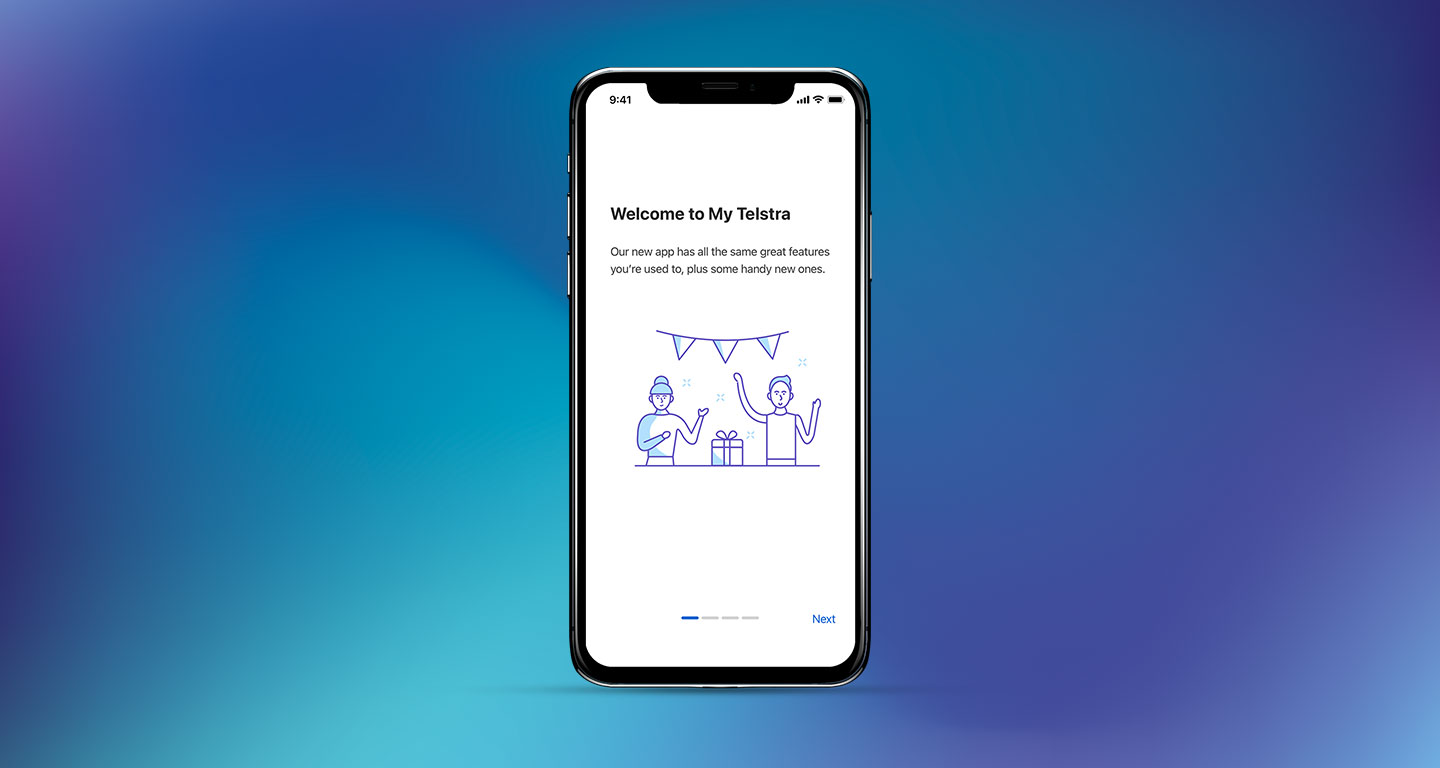
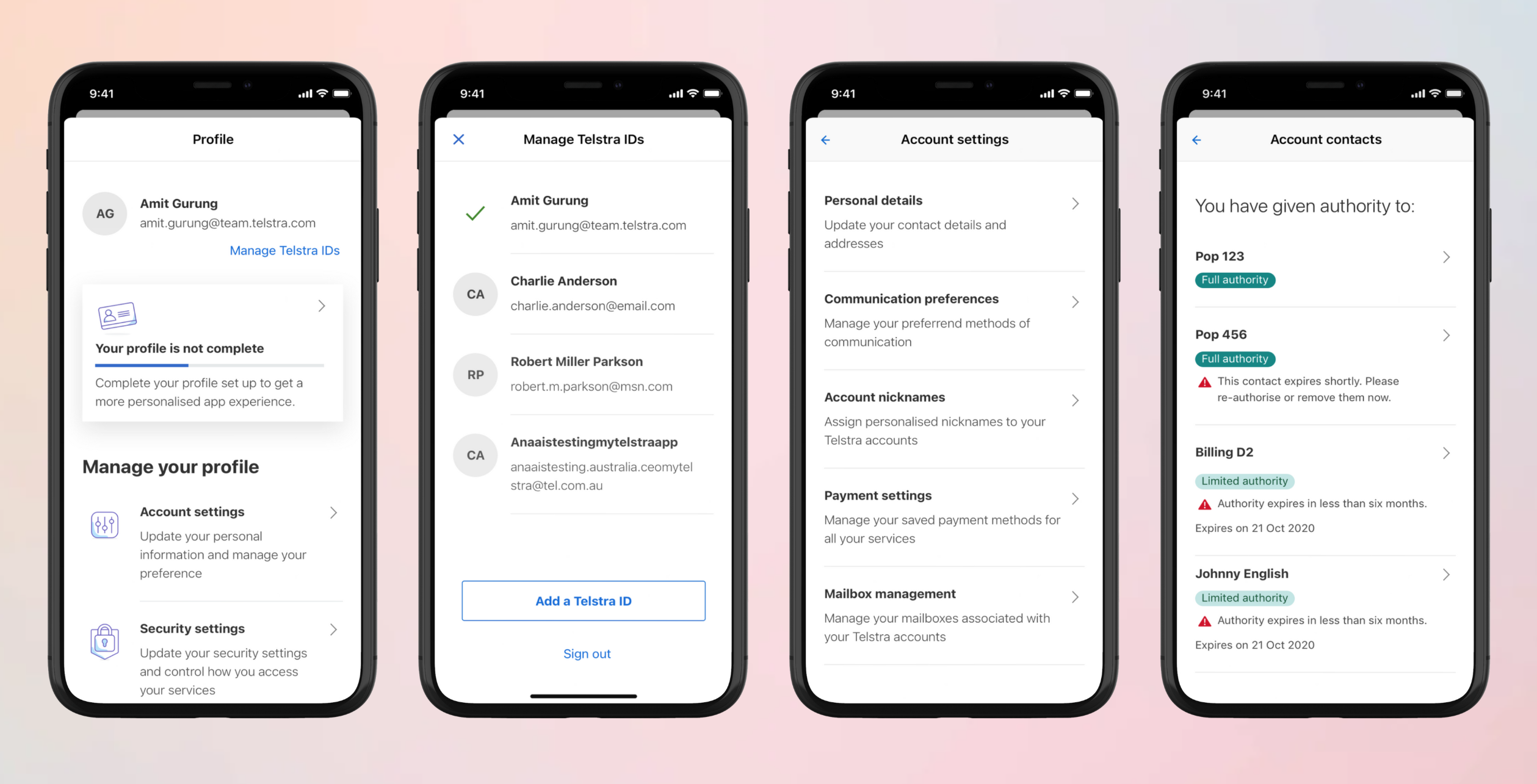


The year 2018/19 was marked by a series of key initiatives and developments that underscored Telstra's commitment to delivering cutting-edge services, expanding its network infrastructure, and enhancing customer experiences. In an era of rapid technological transformation, Telstra was at the forefront of the digital evolution, addressing both the opportunities and challenges that emerged.
The Telstra 24/7 mobile app and My Account web services, while offering convenience and access to various Telstra services, have been associated with several customer problems over time. From complex navigation to confusing IA, limited self-service capabilities, non-intuitive user interface, inconsistent experience, lagging real-time usage information, accessibility, security and lack of personalisation were the most significant challenges.
In a simple quote, Telstra was ready for digital transformation to simplify it's products and services.
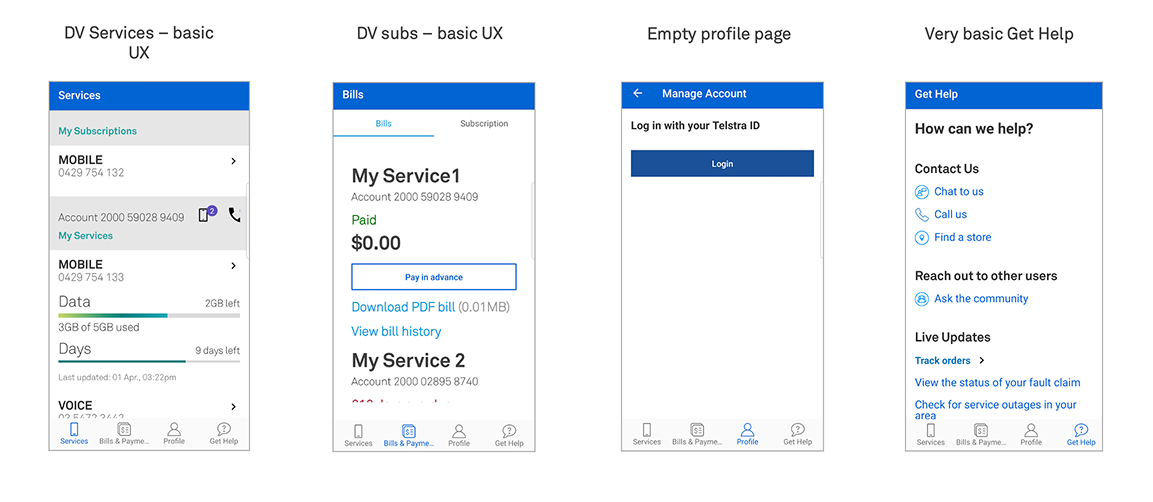
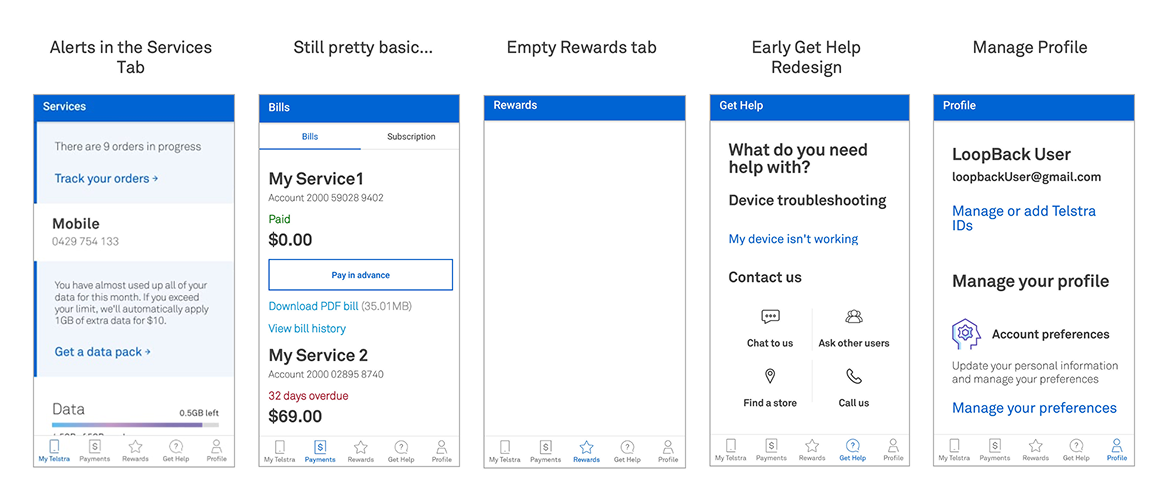
At the heart of Telstra’s T22 transformation was a bold ambition: to remove legacy complexity, digitise core operations, and empower customers to take control through modern self-service tools.
Instead of a feature-heavy app, we need to shift our focus to designing for real customer needs. The primary objective was

Telstra was re-building its self-service app from scratch. Part of this involved migrating more than 2 million app users over from the old app. For me, the challenge was to design a reassuring welcome to the new app and guide customers towards its enhanced features. Telstra’s business goals were to increase mobile experience adoption to max, improve user retention by 5% and ultimately grow unique app users to 8 million.
This wasn’t just a visual overhaul—it was a cultural shift in how Telstra served its 2 million+ customers. The digital experience needed to be faster, more transparent, and future-ready, with inclusivity and trust at its core.
Why it mattered:
We focused on enabling customers to get things done easily within the mobile app — whether that’s checking a bill, managing payments, or getting help. The priority was to support real tasks and solve real problems, rather than simply listing functions. Every design decision was grounded in what users needed to do, not what the app could offer.
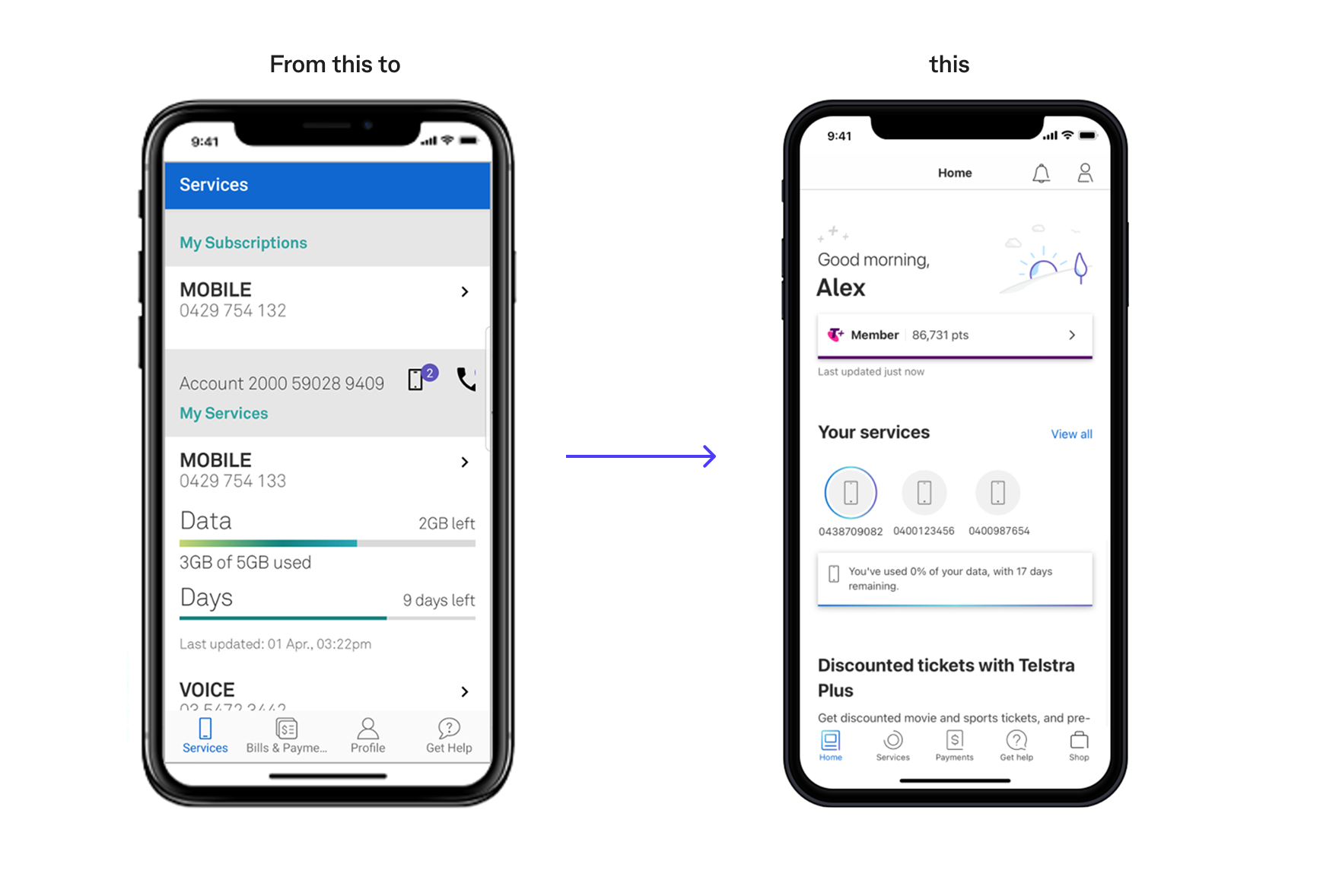
As a senior designer at Telstra, I operated across multiple dimensions of leadership, strategy, and execution to drive cohesive and accessible user experiences across platforms. I consistently balanced hands-on design with thought leadership and cross-functional collaboration.
Strategic stakeholder engagement
I regularly presented design solutions and progress updates to senior stakeholders, including the Head of Digital Transformation, during fortnightly showcases. These sessions helped ensure alignment between the design vision and broader business goals, while also advocating for user-centred design decisions at the executive level.
Leadership in visual and pattern design
Recognised for my expertise in native mobile and responsive web experiences, I was secondment as the Visual Design Lead, after serving as the Pattern Champion for native and web design patterns. In this role, I led the definition, approval, and scalable implementation of reusable design patterns that aligned with the Able Design System, ensuring consistency and efficiency across products and squads.
Accessibility advocacy and external collaboration
As an Accessibility champion, I led workshops in partnership with external experts from Google and Apple, embedding inclusive design principles into the product lifecycle. This work significantly elevated accessibility standards across Telstra’s digital channels and contributed to greater WCAG compliance.
Cross-squad design leadership
I facilitated regular design critiques across squads and programs, fostering a culture of shared feedback, continuous improvement, and design excellence. I also played a pivotal role in aligning efforts across design, product, and engineering teams, ensuring that user experience remained at the forefront of delivery.
Mentorship and system evolution
I mentored junior designers and supported their growth through structured guidance and on-the-job learning. I also contributed to the ongoing evolution of Telstra’s Able Design System, helping to align its roadmap with product needs, accessibility best practices, and platform capabilities.
The Double Diamond process played a crucial role in the design of the My Telstra app and web application. This structured design approach allowed us to thoroughly understand user needs, define the problem, develop a wide range of potential solutions, and refine these into a final set of features. Each stage of the process was iterative, involving user feedback to shape a solution that was both innovative and intuitive.
We used the Double Diamond HCD framework to drive design from insight to impact:
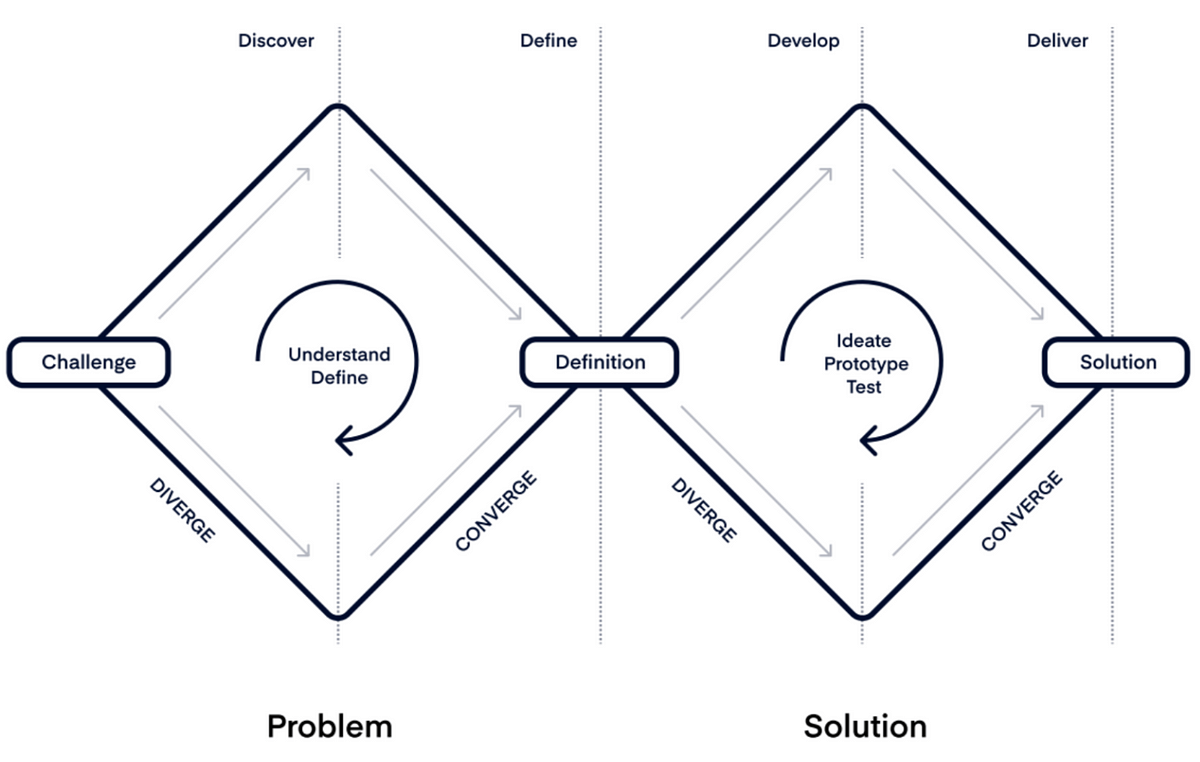
As part of the initial discovery phase, I embedded myself in a series of cross-functional workshops that brought together stakeholders from product, engineering, customer support, and marketing. These collaborative sessions were instrumental in surfacing historical pain points with the legacy Telstra 24/7 app and My Account web platforms.
The goal was twofold:
I also reviewed 90 days of previous analytics to see what performed well and uncover friction points. The data revealed issues around sign-in, tour completion and user retention. These insights led me to sketch wireframes focused on two concepts. The first was a welcome tour, with a set of targeted suggestions for the user based on existing data. The second was a contextual tour, a series of pop ups that gave the user incentives to explore features as they navigated the app.
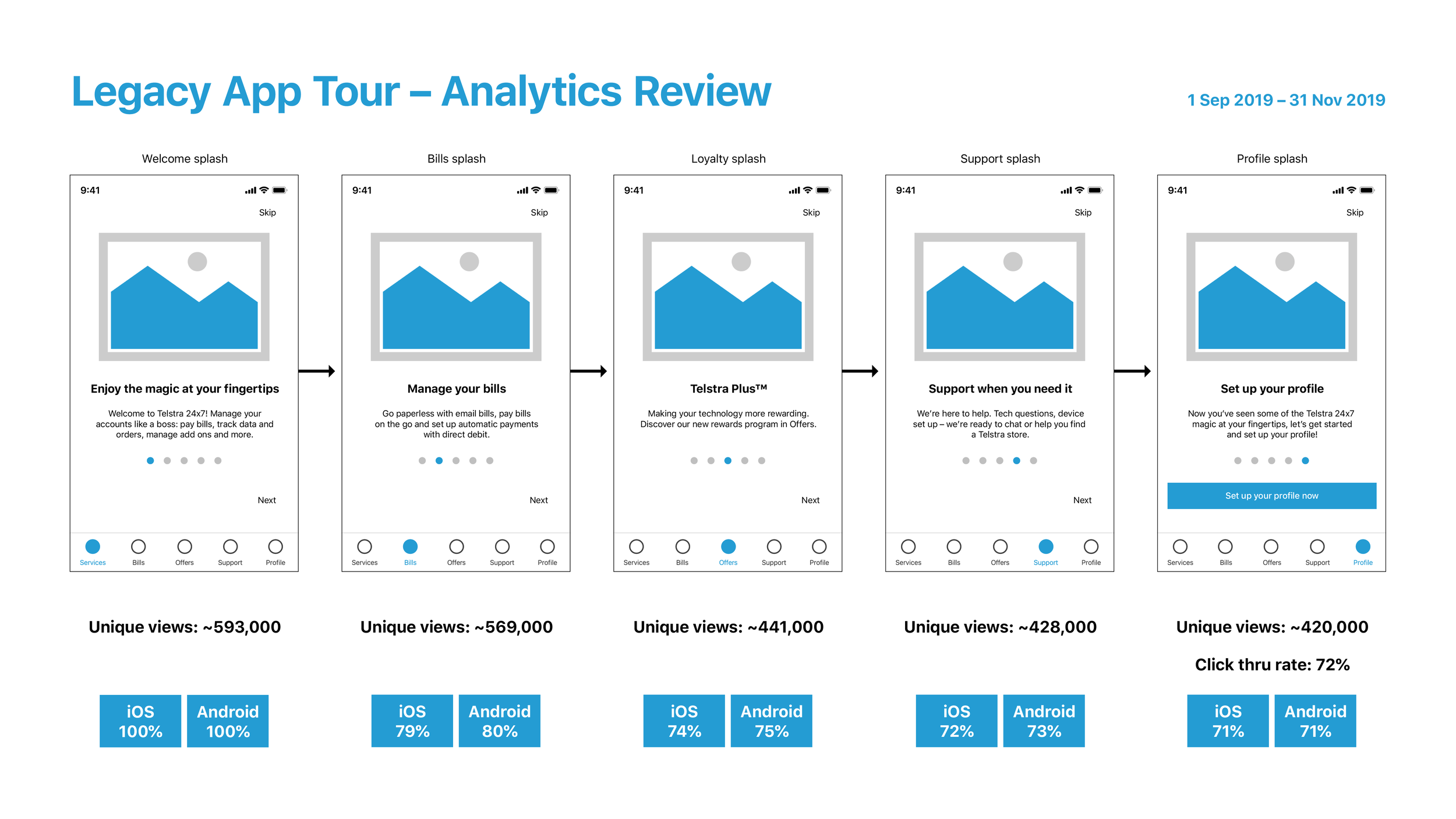
The project involved discovery and ideation workshops, CX journey mappings, conducting in-depth user research, accessibility guide, interactions guide, design systems, and visual design delivery for web, iOS, and Android platforms.
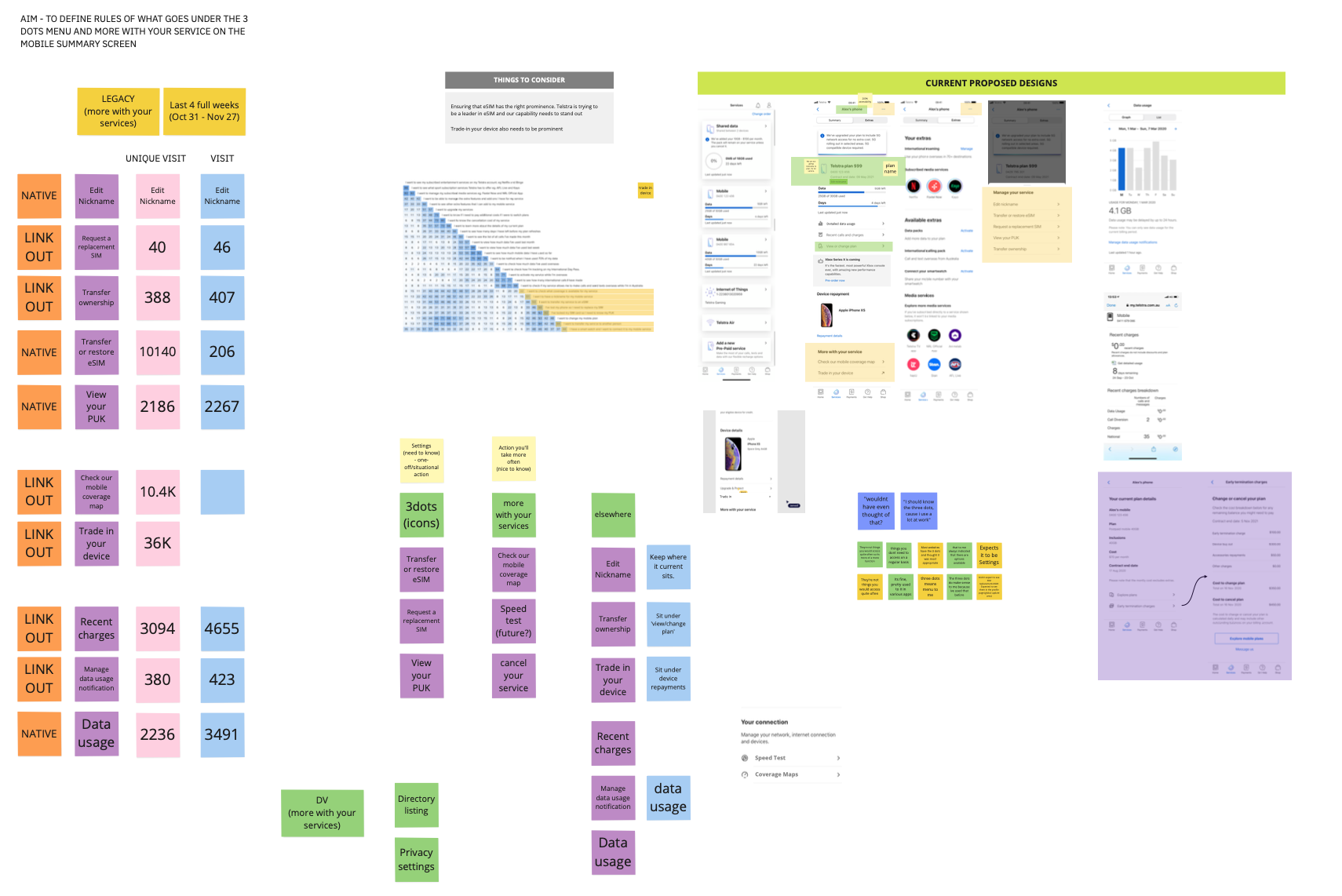
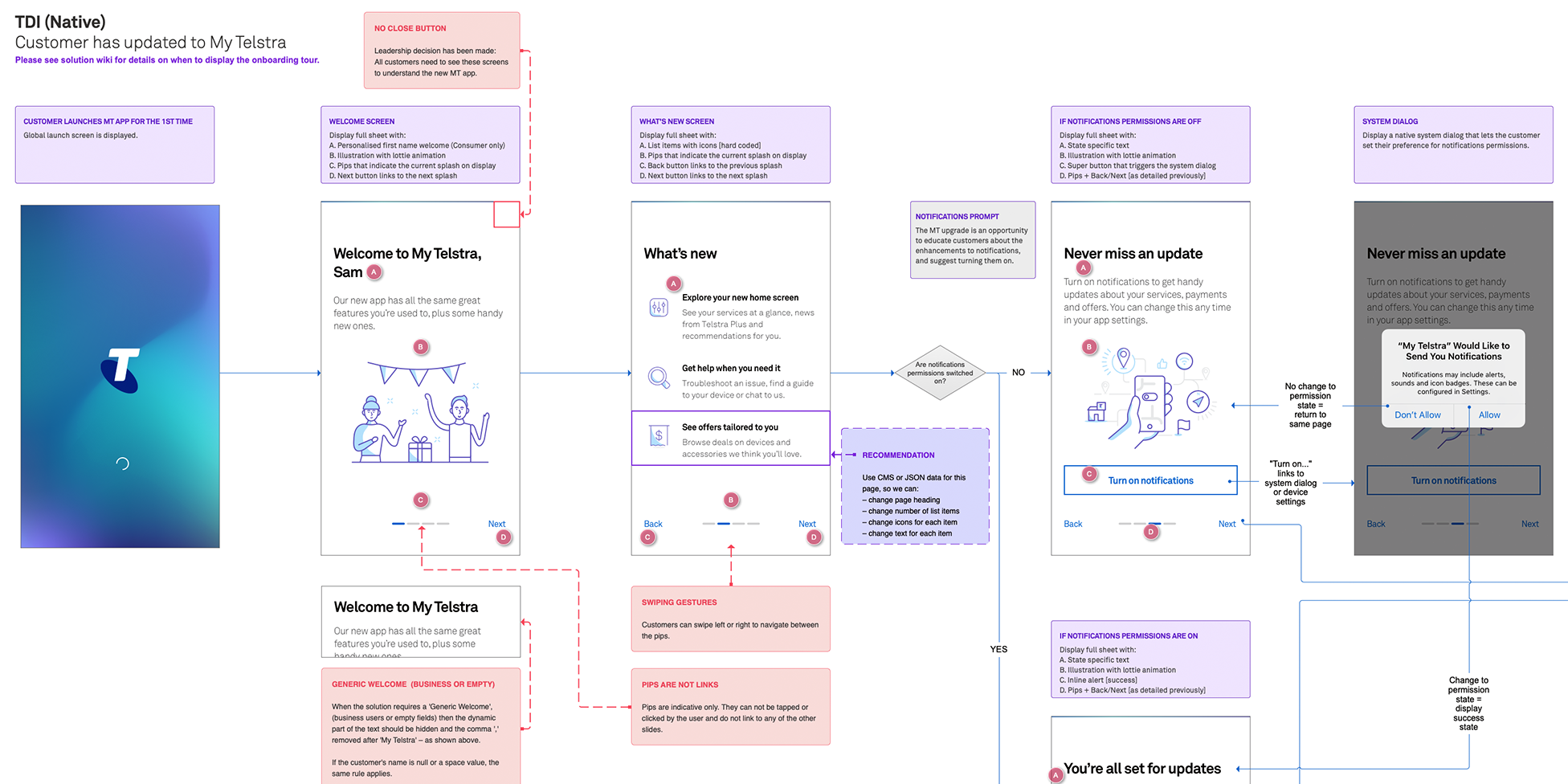
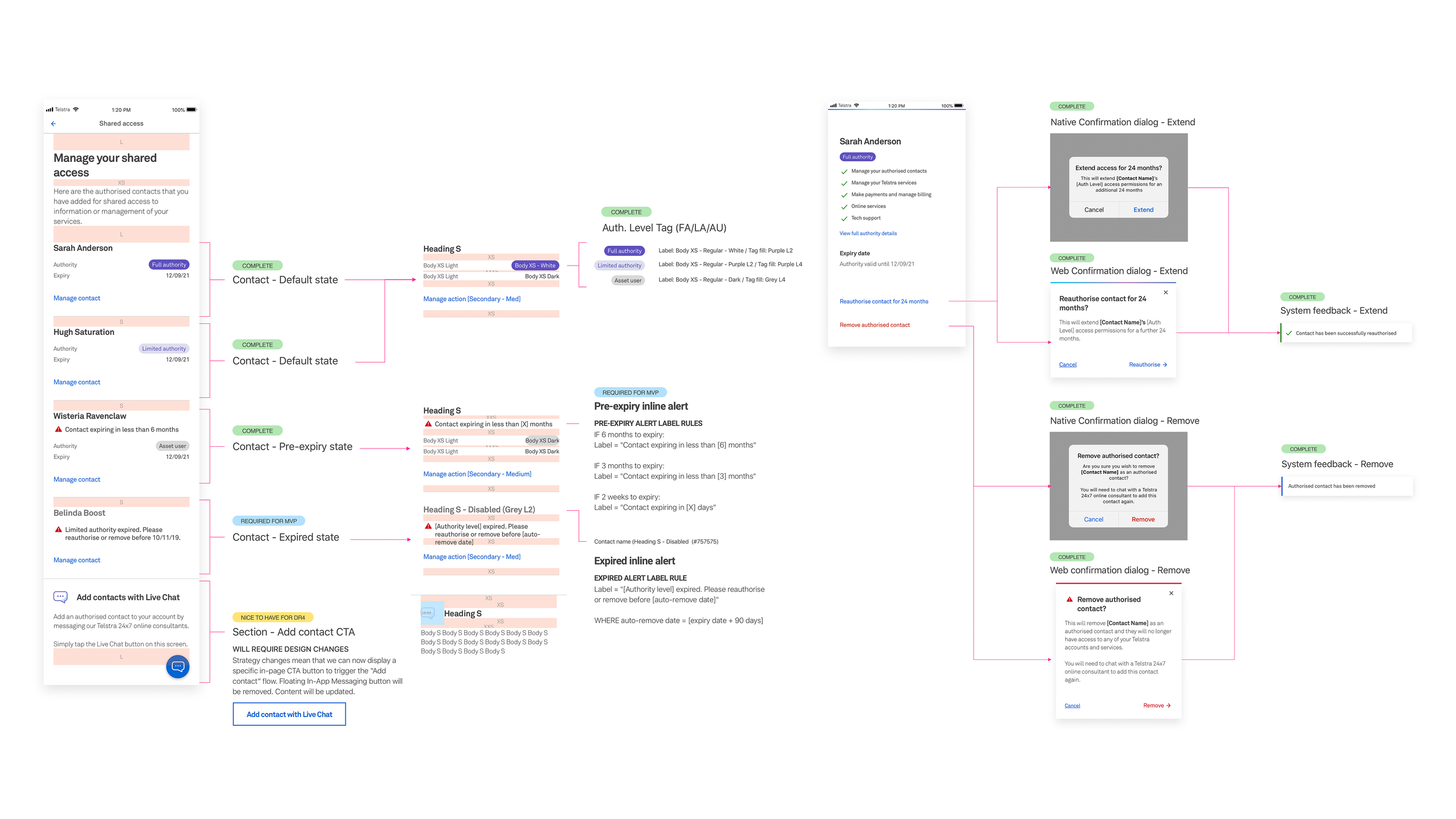
Throughout the design process, I actively sought feedback by engaging in regular critique sparring sessions with peers. At the time, our team was building a new app alongside the development of a new design system, which placed strong emphasis on styling consistency and the correct use of emerging components.
In addition to contributing as a designer, I also took a leadership role—facilitating design critiques, approving design patterns, and helping ensure alignment across teams. This not only strengthened our visual cohesion but also helped shape scalable, system-driven design decisions that could evolve with the product.
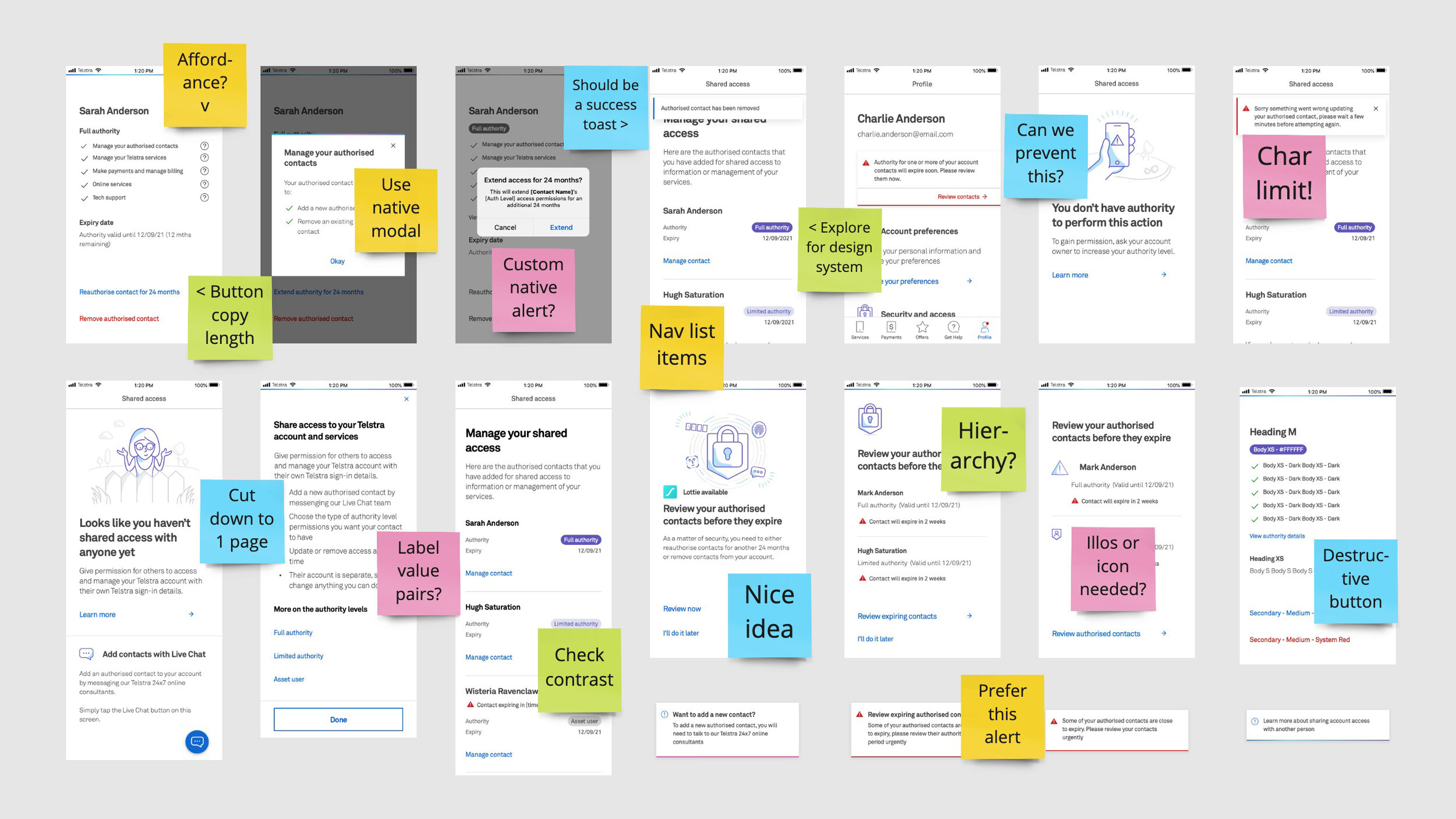
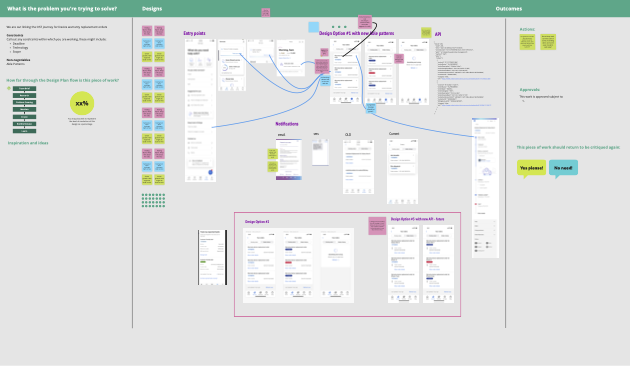
Telstra conducted extensive user research activities used to gain insights into customer behaviors, needs, preferences, pain points and expectations. These activities (Usability testing, tree jack, card sorting, usability score, A/B testing, collaboration with accessibility experts, and competitive analysis) were essential in informing the design and development of products, services, and experiences.
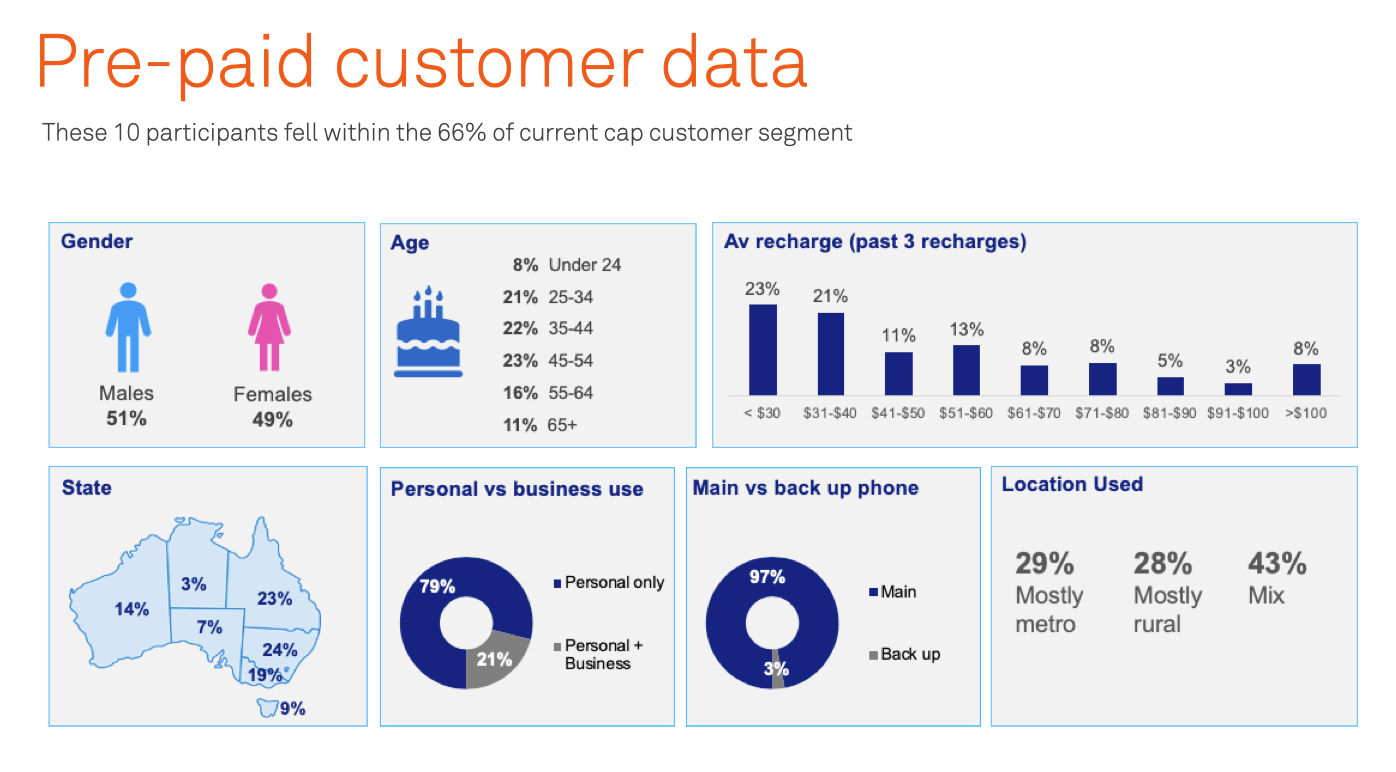
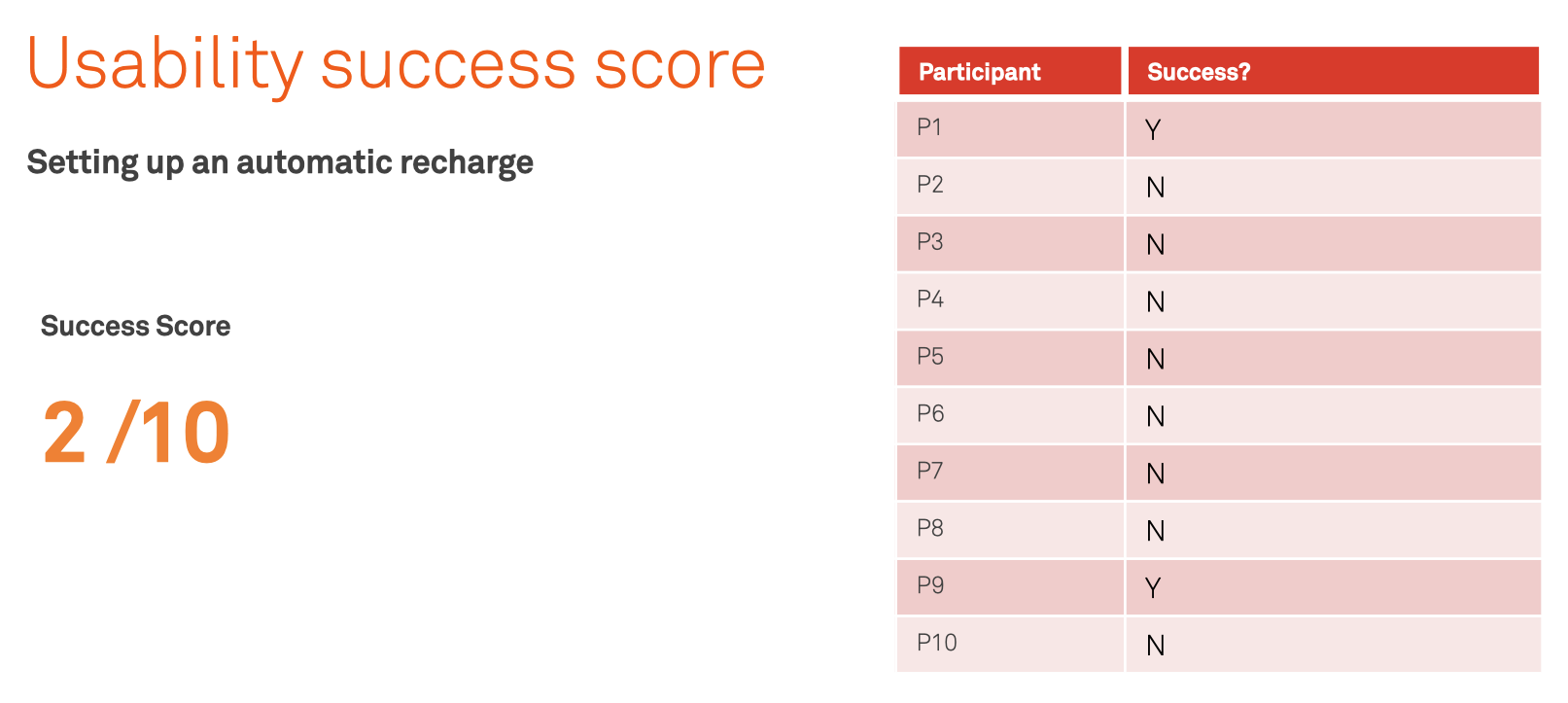
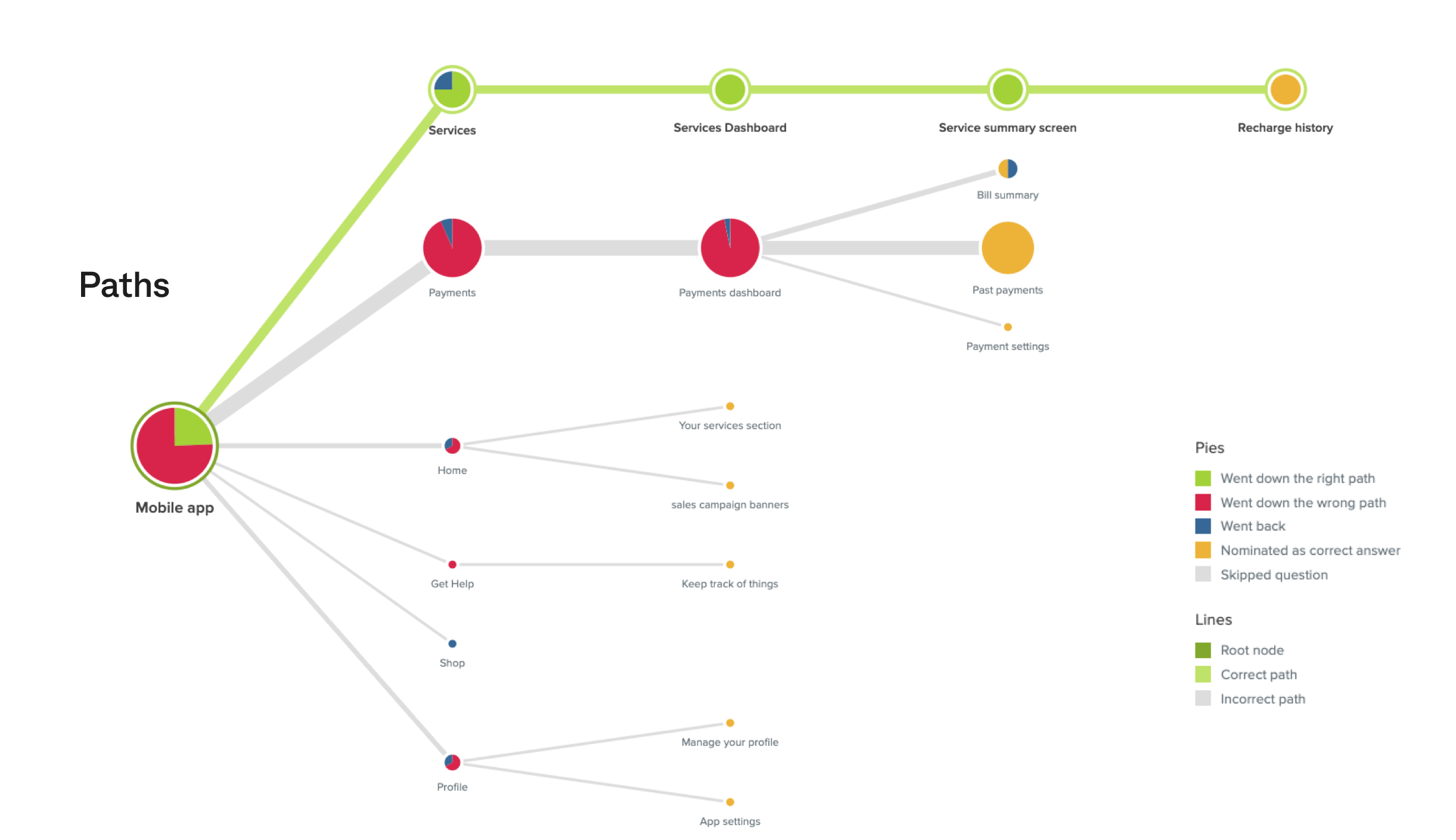
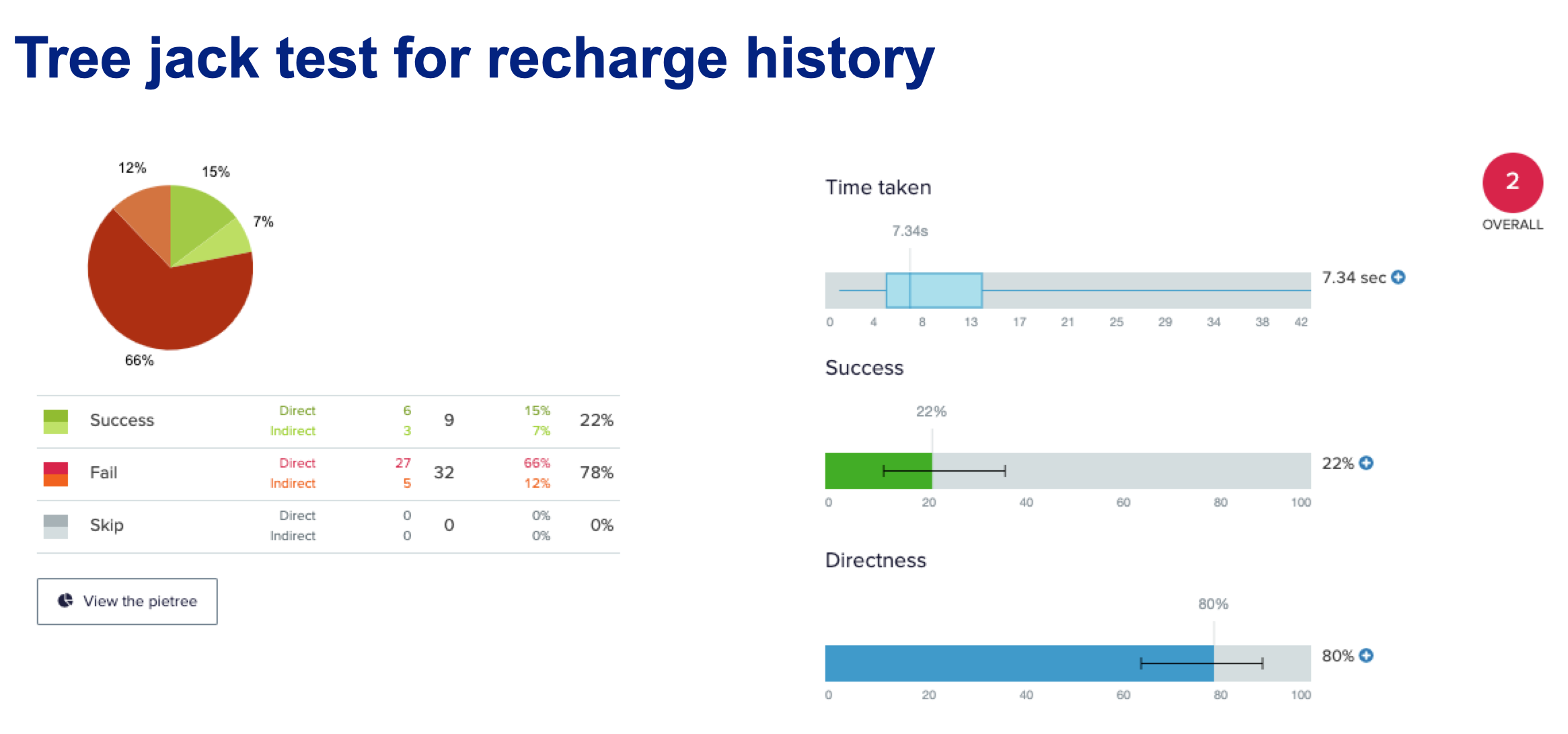
I organised multiple days of user testing at labs in Sydney and Melbourne. These consisted of one-hour interviews with set of 12 different Telstra customers. For exmaple, I gave participants a series of tasks to complete across two different prototypes and encouraged open feedback. From this, I observed preferences between the concepts, gauged content relevance and tracked choices such as clicks, permission acceptance and follow on actions. The results validated the welcome tour idea.
Example: Testing insights for guided onboarding iteration 1
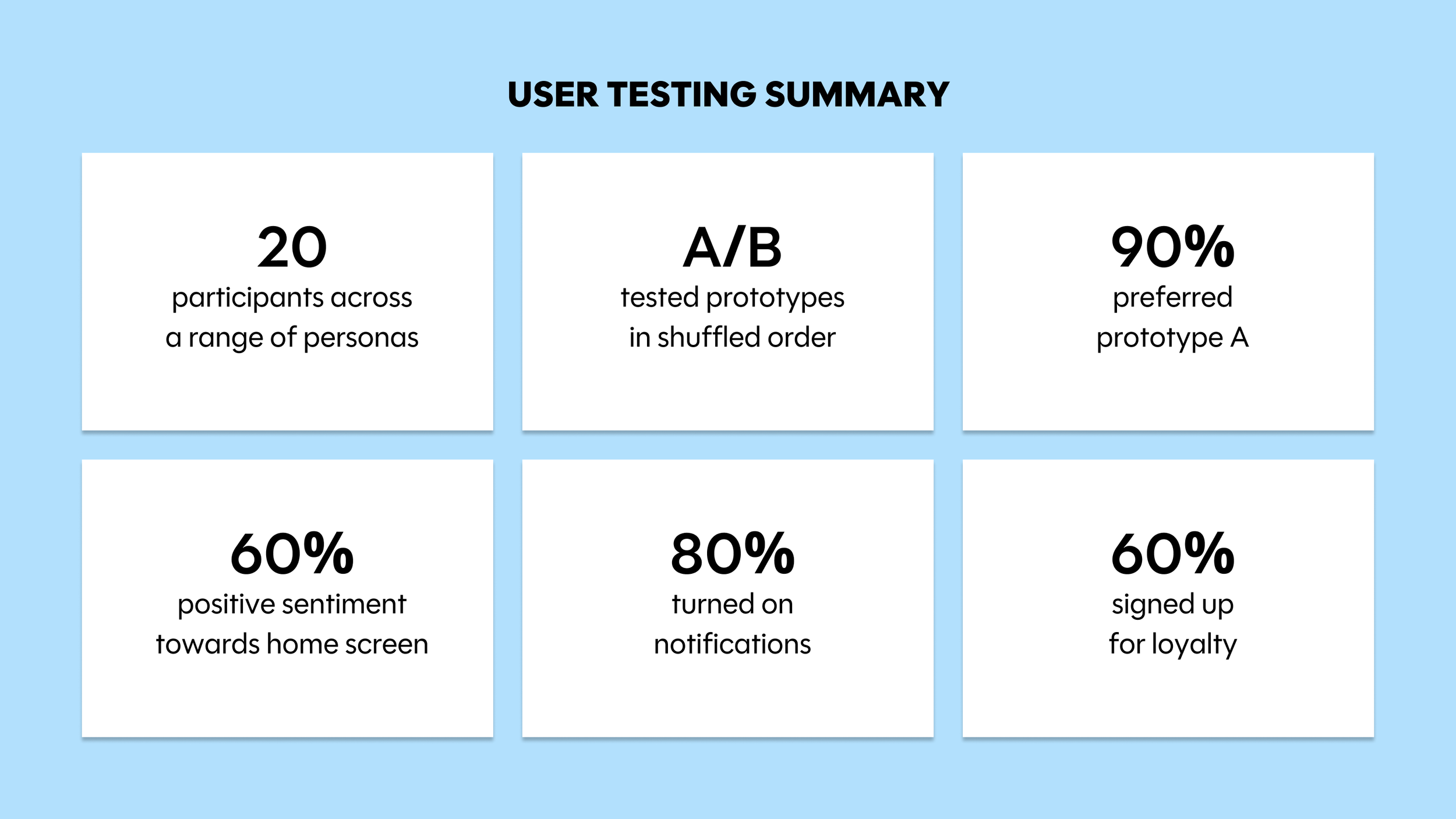
Throughout the engagement, the team sought to translate improved customer experiences into increased customer satisfaction and loyalty—all while reducing the company's customer support effort. More than a self-service app for essential telecom services like managing services, addons, billings, and purchasing products, the My Telstra app offers an elevated lifestyle element throughout. Baked into the user experience is personalized, aspirational content and offers that go far beyond the simple Telstra purple loyalty program to provide customers with meaningful, strategic guidance for incorporating their telecom services into their real lives.
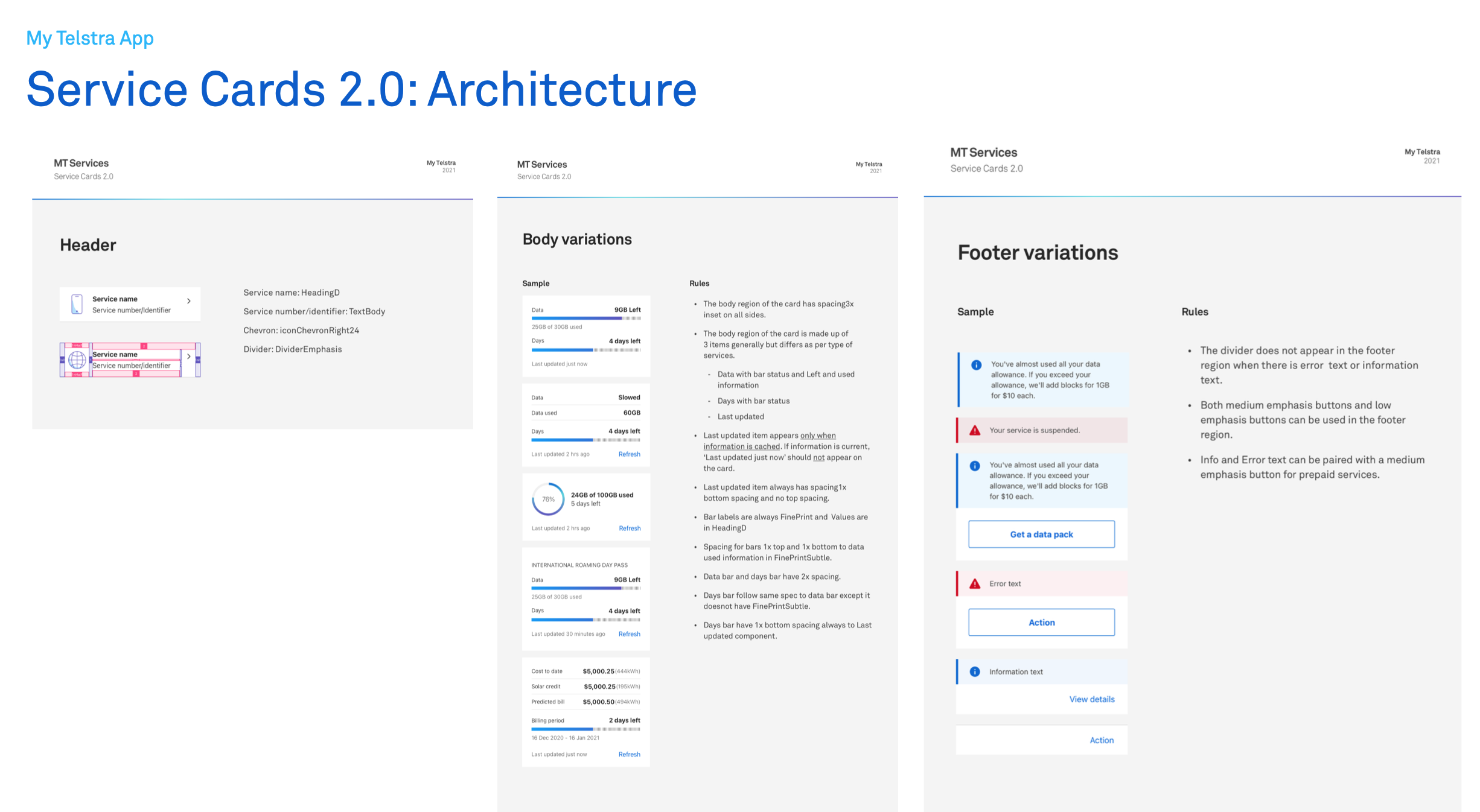
The strategy was to transform the digital customer experience from scratch to deliver futuristic capabilities, which included discovery, ideating, design, and review. The engagement had the design strategy, end-to-end experience design, and build up a new company-wide design language system (Able design system) to support Telstra's massive rebranding effort and inform the design of new products and services.
The flagship product of the matured design system is the My Telstra app—a new, personalized digital platform that empowers Telstra customers to take control of their telecom services. Informed by in-depth customer research, together raised the standard for self-service telecom experiences, driving new engagement across Australia for 22 million customers.

In the My Telstra app, the dashboard is the nucleus of the user experience, presenting a unified view of users' postpaid, prepaid, and fixed services. We meticulously crafted this feature to enable customers to monitor and manage all their Telstra services from a single pane. Real-time data feeds ensure that customers have up-to-the-minute information on usage, billing, and service status, enhancing their ability to control their telecommunications experience efficiently.
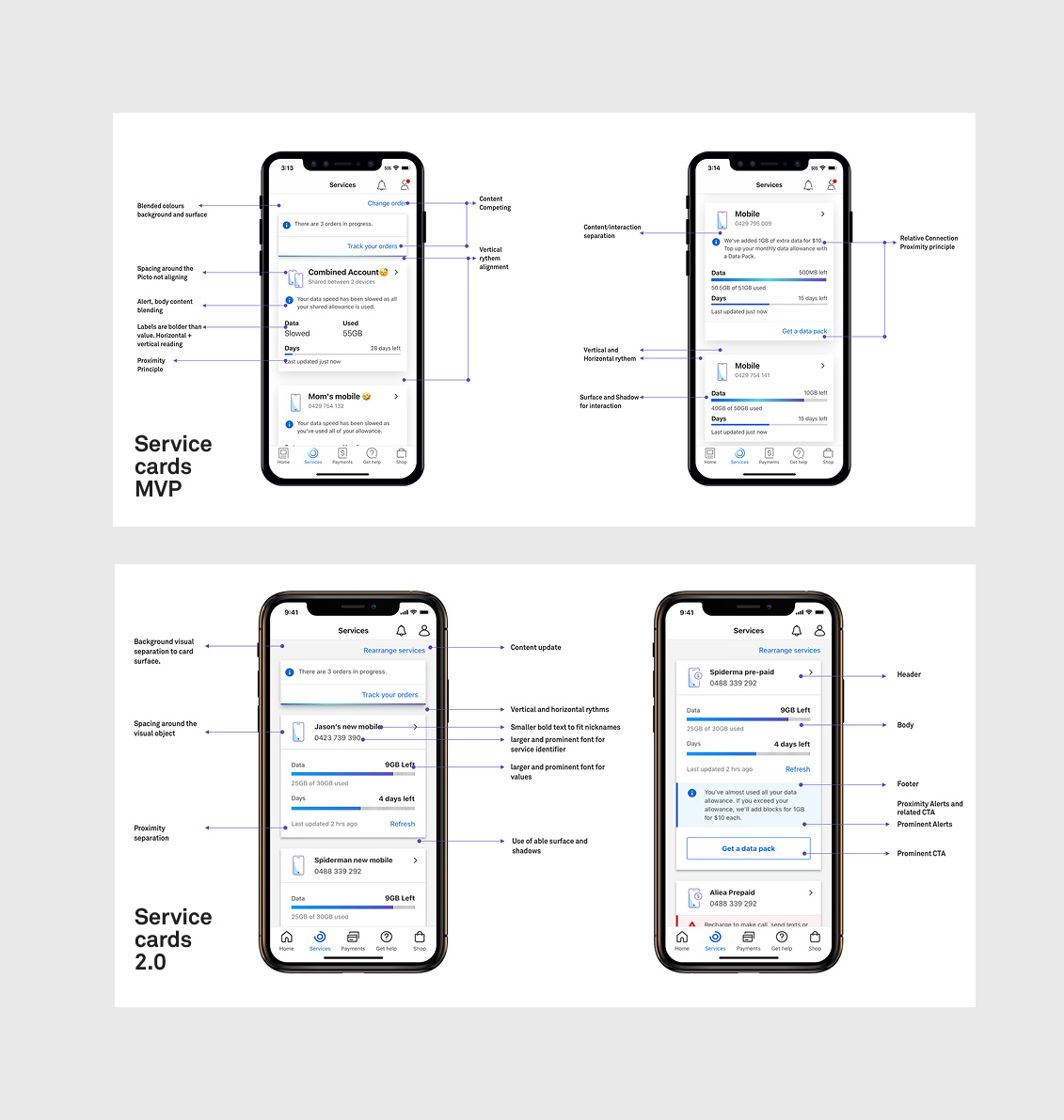
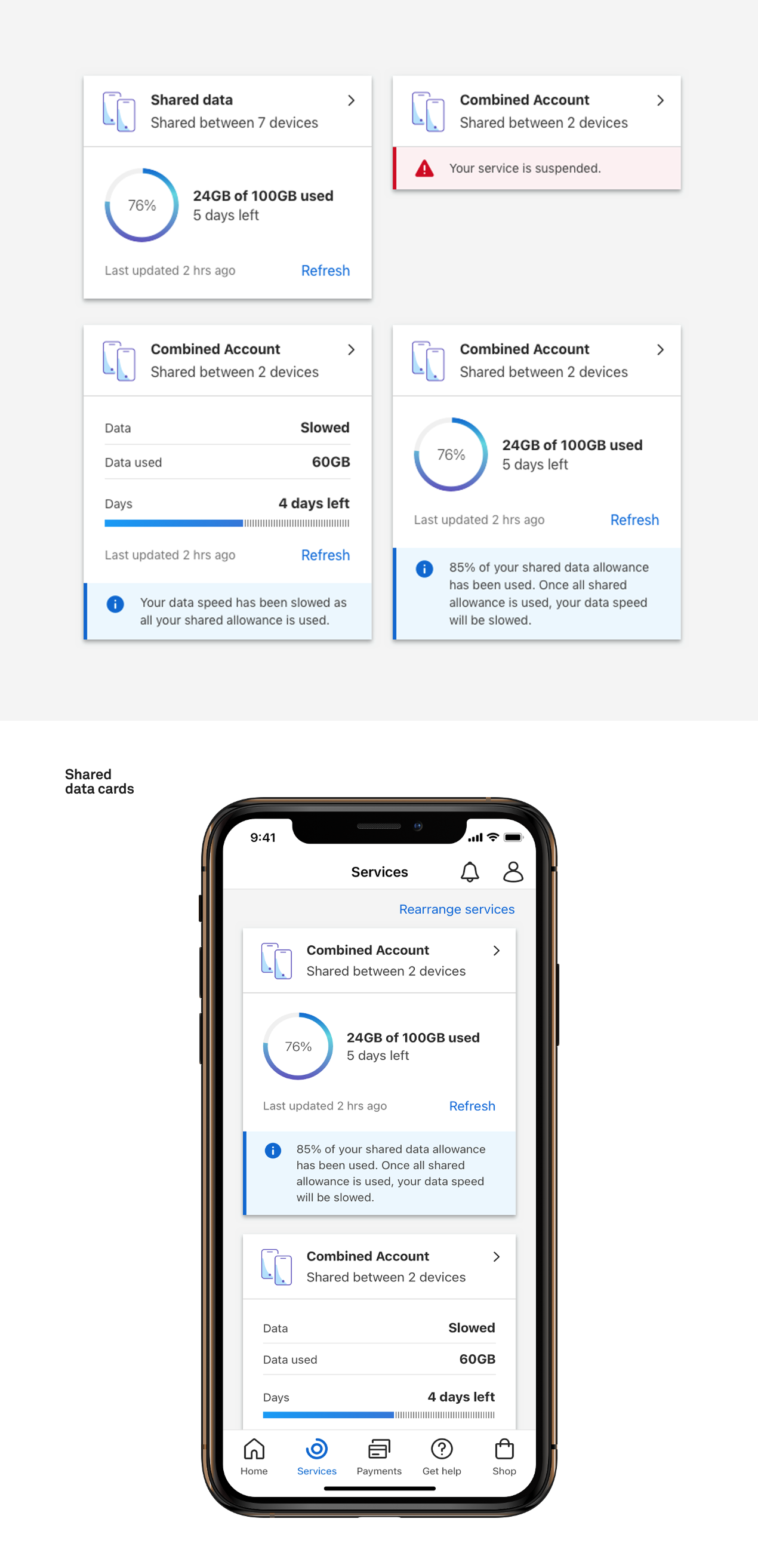
The device repayment feature is designed to give users clear visibility and control over their device repayment plans. We implemented intuitive visuals and straightforward language to demystify the repayment process, providing users with a transparent overview of their remaining balance, due dates, and history. This empowers customers to plan their finances better and make informed decisions about their device investments.
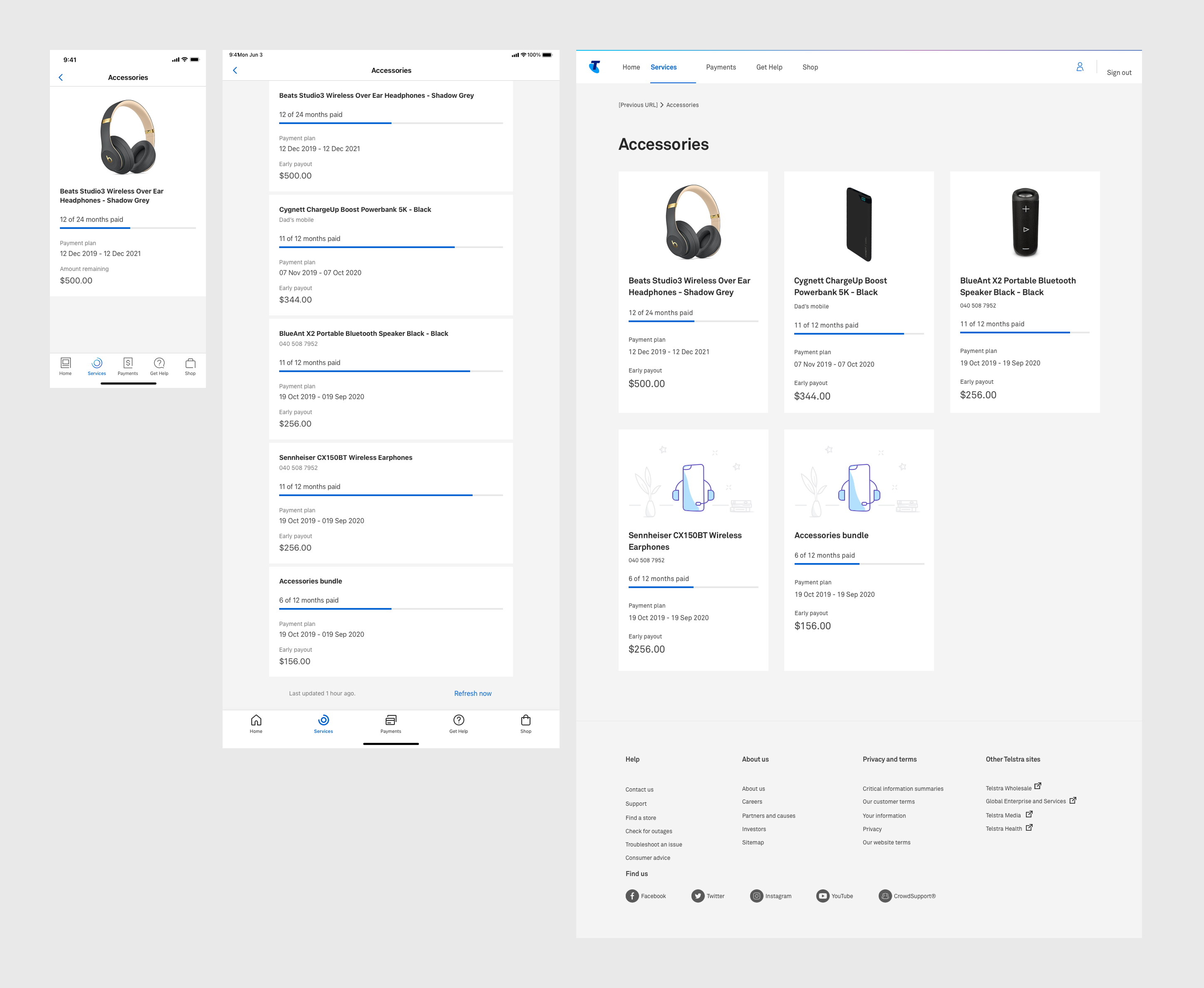
Security is paramount in the My Telstra app. The Device Protect feature offers users robust tools to safeguard their devices against theft, loss, and damage. We integrated this feature with real-time diagnostics and support, enabling users to quickly lock their device, locate it, or wipe data if necessary. The interface is deliberately simple to navigate, ensuring users can act swiftly in the event of an emergency.
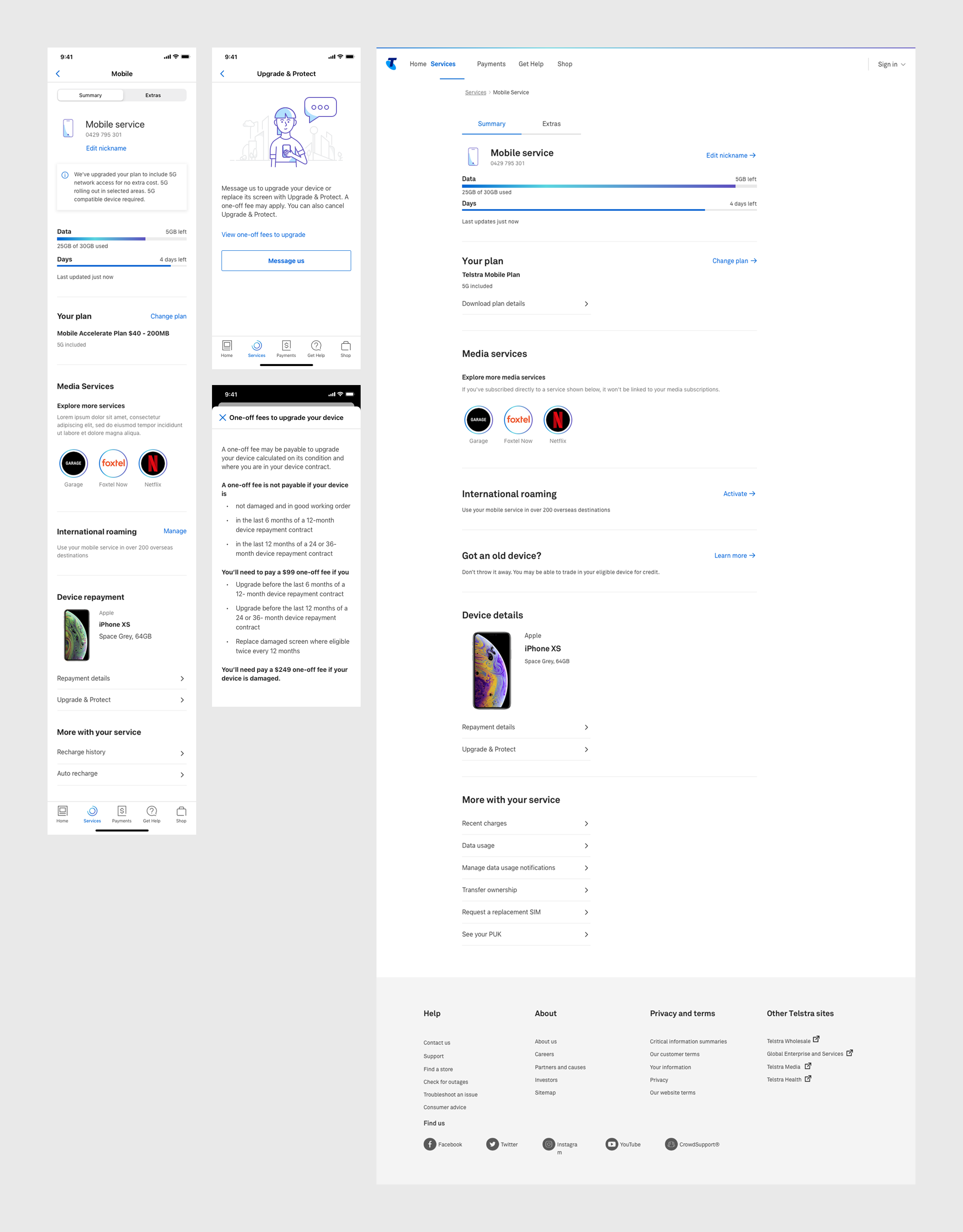
Recognizing the importance of privacy, we tailored the privacy settings to provide users with extensive control over their personal data. This feature is built with a clear, user-friendly interface that allows users to manage permissions, data sharing preferences, and access history, thus ensuring a trustworthy and secure user experience.
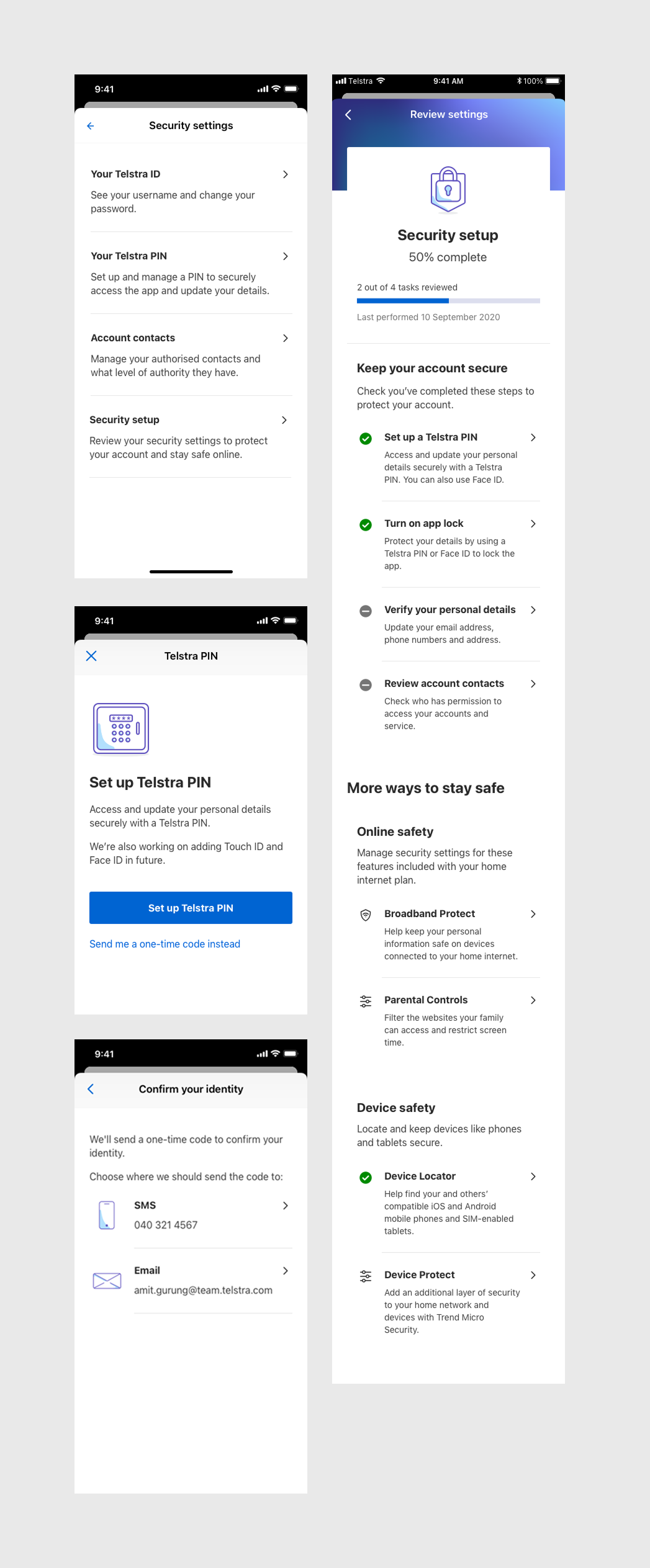
The service suspension feature is a critical function that allows users to temporarily disable their service with ease. This is particularly useful in situations such as suspected fraud or loss of device. We designed this feature to be accessible within a few taps, making it quick and stress-free for users to protect their accounts.
Profile management is streamlined in the My Telstra app, enabling users to update their personal information, contact details, and preferences with just a few clicks. The design is intuitive, leading to a frictionless experience that encourages users to keep their profiles up to date, which is essential for maintaining service accuracy and relevancy.

For users managing multiple accounts or for families, the authority management feature is indispensable. We designed this feature to allow users to set and manage different levels of access for each service, providing flexibility and control. This ensures that account holders can delegate management tasks while maintaining security and oversight.
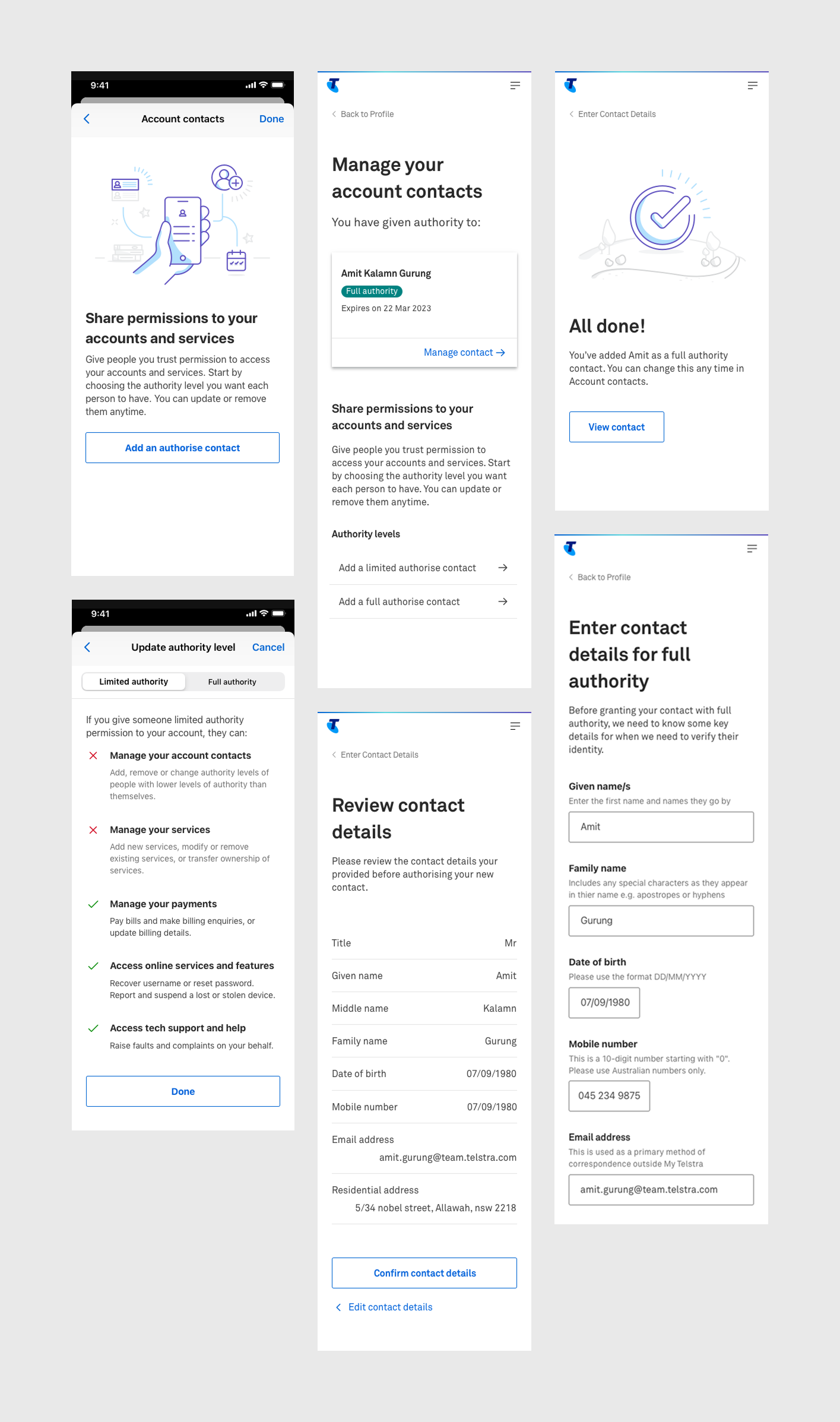
To ensure that users can leverage all the features of the My Telstra app effectively, we implemented a guided onboarding process. This feature introduces users to the app through step-by-step tutorials, highlighting key functionalities and providing tips on how to manage their services effectively. This educational approach is designed to empower users and enhance their confidence in using the app.
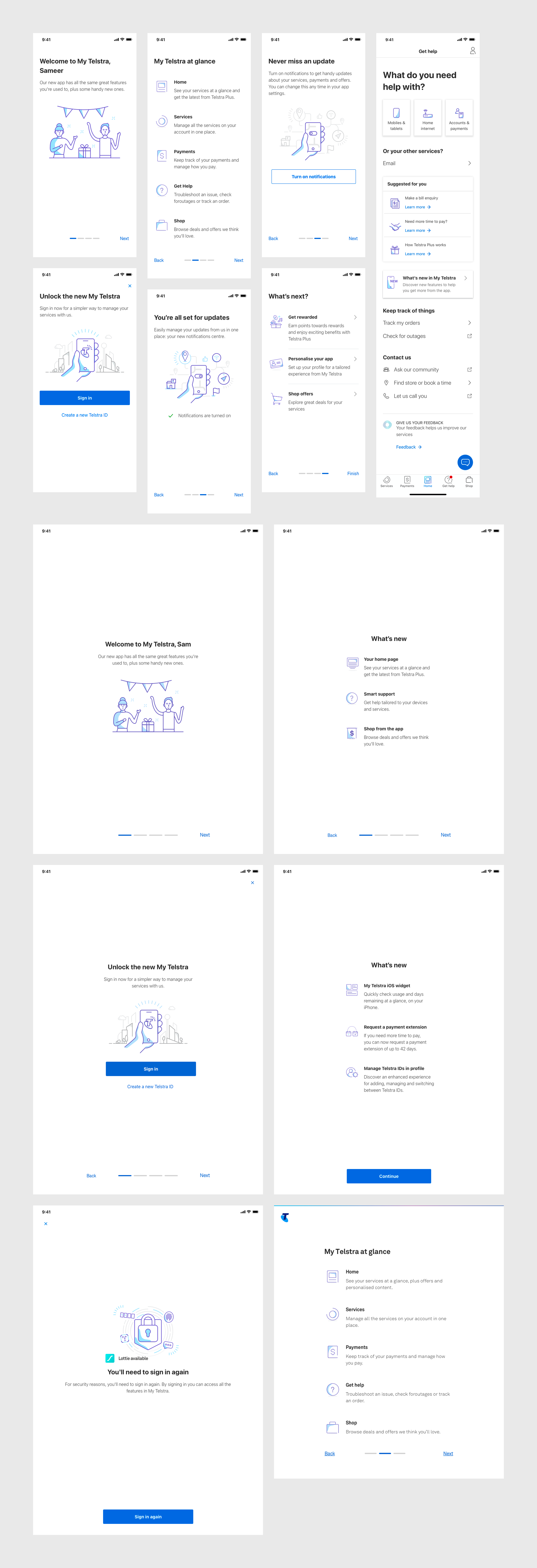
Accessibility is a cornerstone of the My Telstra app design. We have adhered to global accessibility standards to ensure that the app is usable by everyone, including those with disabilities. Features such as screen reader compatibility, adjustable text sizes, and high-contrast modes are just a few examples of our commitment to inclusivity.
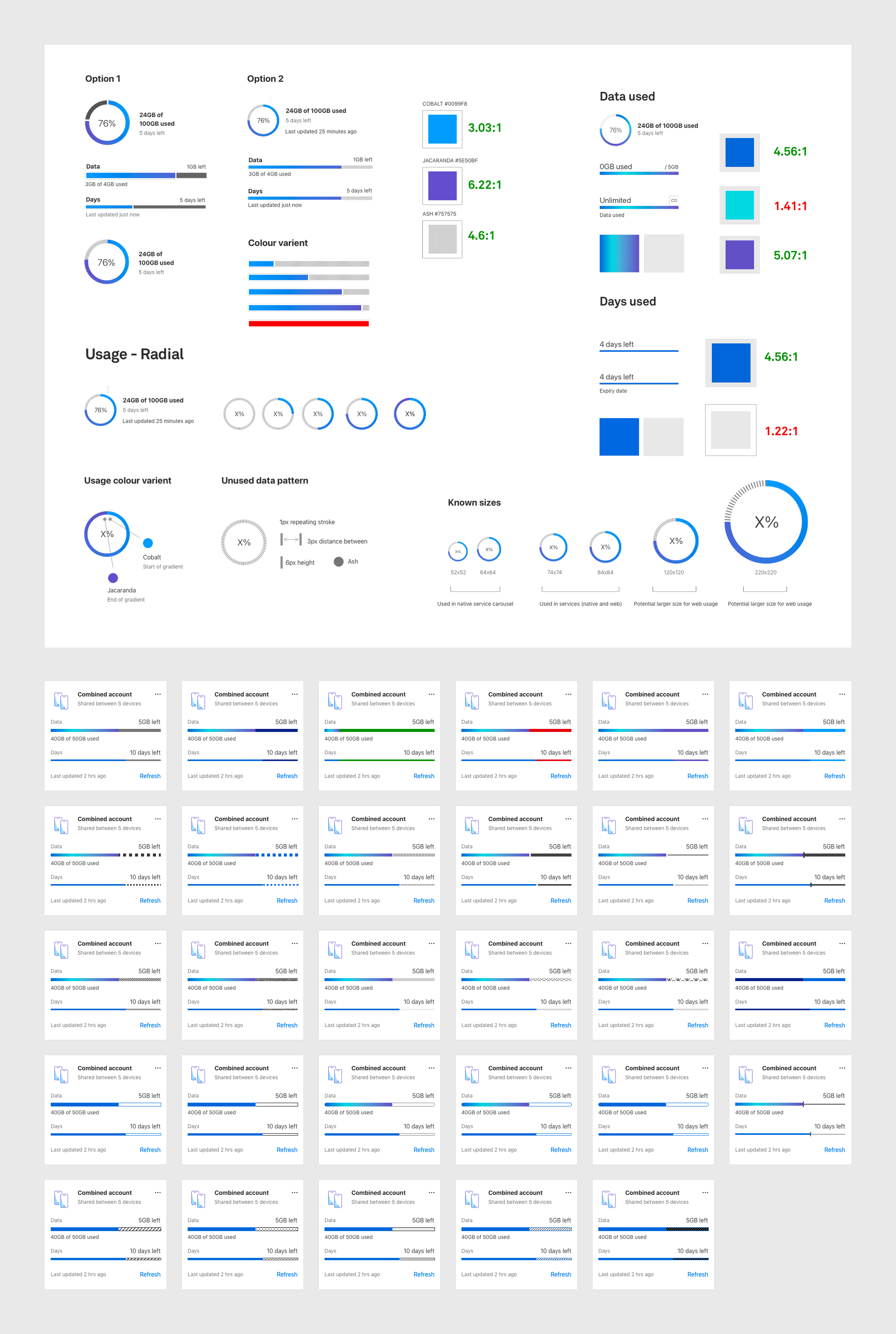
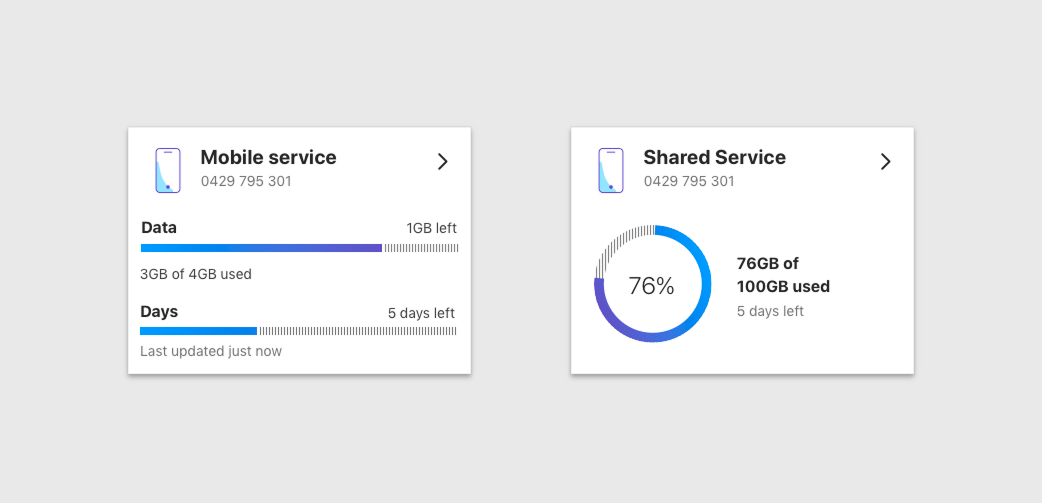
The mobile-first approach guided the design of the My Telstra app, ensuring that the most critical functions are easily accessible on a smaller screen. We prioritized touch interactions, streamlined navigation, and optimized performance for mobile devices, which enables a seamless experience for users on the go.

The My Telstra app leverages global native design patterns for iOS, Android, and Web to provide a consistent and familiar user experience across all platforms. By using platform-specific design languages, we ensure that users have a natural interaction with the app, irrespective of the device they are using.
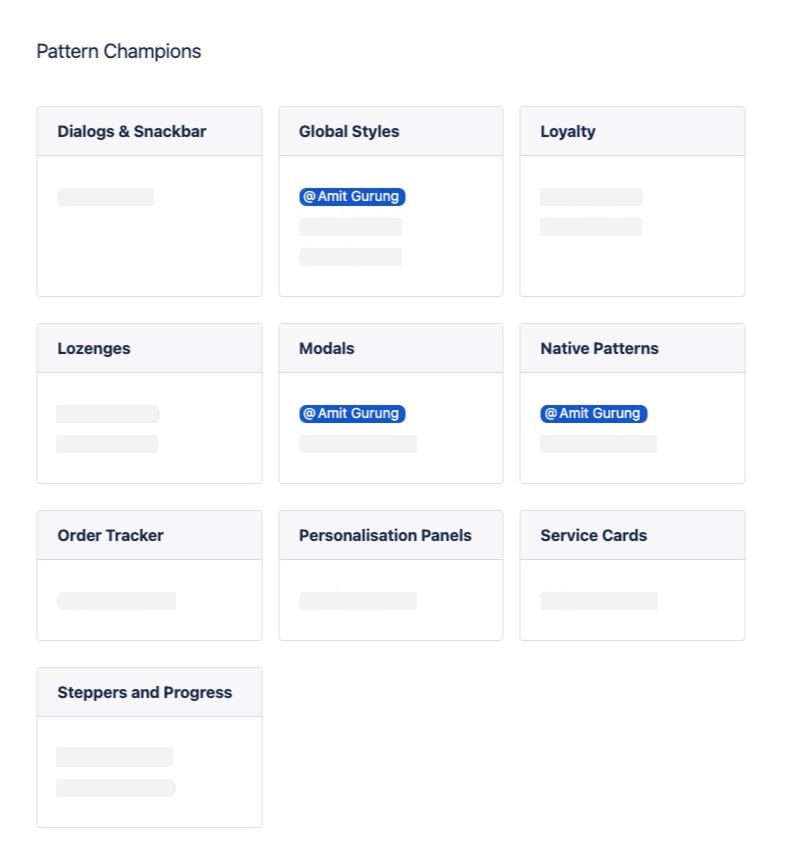
The Telstra 24/7 app was built to deliver utility—check usage, pay bills, manage services. But as customer expectations grew, it became clear that a feature list wasn’t enough. People wanted more than tools—they wanted control, clarity, and connection.
The launch of My Telstra marked a shift from function-first to customer-first. Backed by deep user research and a mobile-first strategy, we reimagined the experience around real needs—personalisation, simplicity, and proactive support.
With a multi-platform launch and a thoughtful marketing rollout, we didn’t just replace an app—we introduced a new way for millions of Australians to engage with Telstra in their everyday lives.
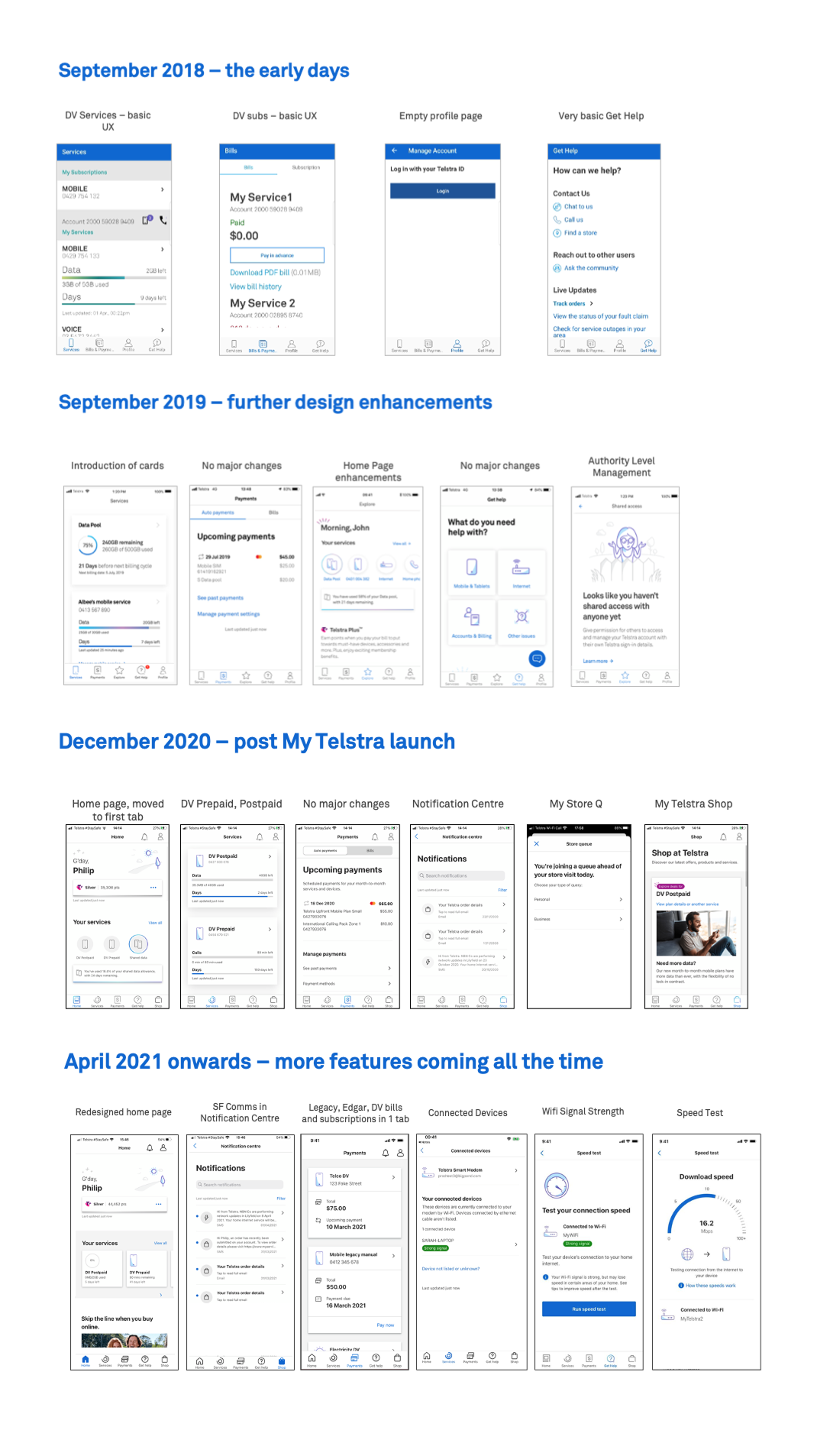
When comparing pre- and post-redesign metrics, the results were telling. Not only did usability and engagement improve, but there was also a significant impact on the business, including a decrease in support calls and an increase in sales through the digital channels. Customer retention also improved, as the new app design helped to foster a more loyal user base.
Post-implementation, our focus shifted to UX metrics to quantify the redesign's effectiveness. Usability dramatically improved, as evidenced by a higher mobile users, comments and feedbacks in app stores. Engagement metrics, such as completion rates, daily active users, showed an uptick, indicating that users found the redesigned app more compelling to use daily. Task success rates surged, particularly for critical actions such as bill payments or service upgrades, showcasing the app's enhanced efficiency.
The redesign's success was also mirrored in conversion rates, which climbed, reflecting a smoother user journey that facilitated service upgrades and new account sign-ups. Importantly, customer satisfaction metrics like NPS and customer satisfaction surveys reflected a positive shift, aligning with the increased usability and task success rates.
The launch of "My Telstra" app and web project stands as a testament to the value of user-centered design and accessibility considerations. The project underscores how a strategic UX approach can lead to meaningful improvements in customer satisfaction and business performance. The project concluded with a set of recommendations for future enhancements and a commitment to ongoing evaluation to keep the app at the forefront of user experience excellence.
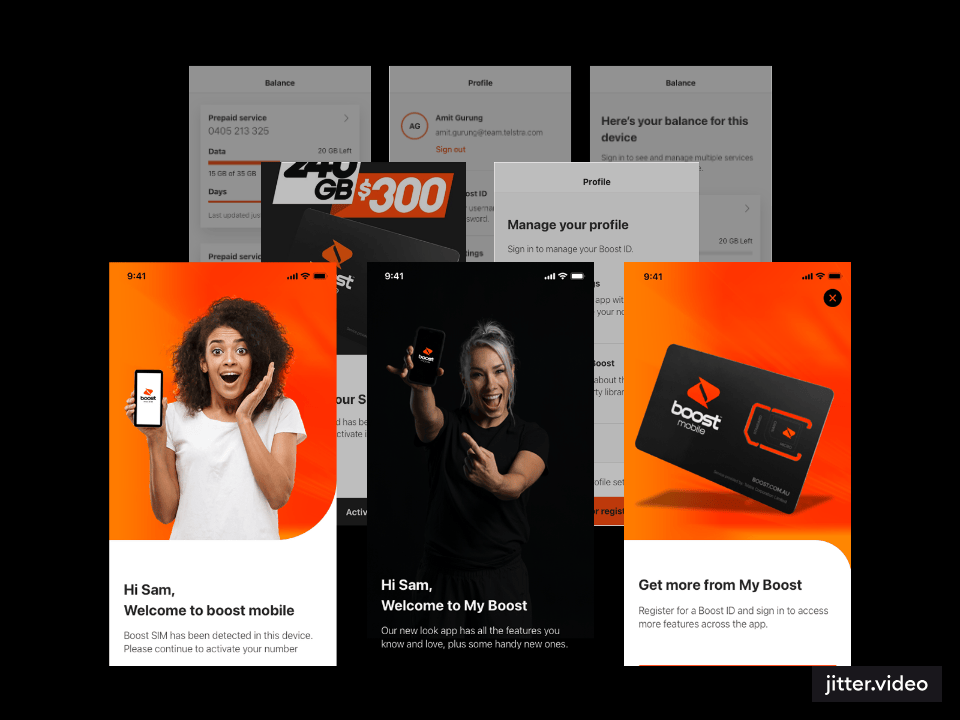
Boost Mobile, known for its competitive prepaid offerings, was rapidly gaining popularity among cost-conscious Australians seeking simple, affordable mobile plans. With increasing demand, there was a need to modernise the digital experience and launch a new app that could support the brand’s momentum and serve a growing base of prepaid users.
Design a mobile-first experience for prepaid customers many of whom have limited data needs, price sensitivity, and a desire for quick self-service. The app needed to be lightweight, intuitive, and inclusive while supporting Boost’s distinctive brand and rapid time-to-market goals.
We designed the app from the ground up, launching the Boost Design System to ensure consistency, speed, and scalability. Core features like recharge, balance check, and plan selection were prioritised for simplicity and speed. We conducted accessibility testing to meet WCAG 2.1 AA compliance and collaborated closely with stakeholders to align delivery with user needs and brand goals.